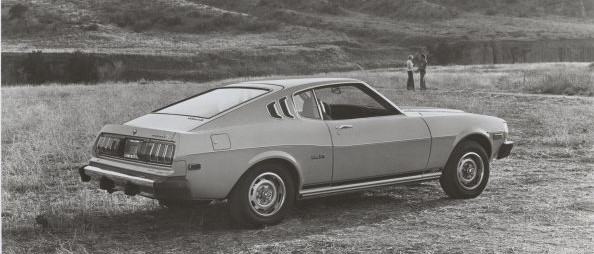It’s no secret that Japanese cars started arriving on North American shores en masse during the fuel-conscious 1970s. But while many of those early imports are remembered as gas-sipping econoboxes, there were still options for folks who wanted a bit more oomph.
Case in point, the first generation Toyota Celica GT made from 1970-77.

With body lines that faithfully mimic what Detroit was cranking out in the late 1960s, the Celica sure looked the part of a bona fide muscle/pony car. And adding the GT trim gave it some performance to go along with that sporty silhouette.
For starters, clicking the GT option added accouterments like a five-speed manual gearbox, special wheels, and a slick rocker stripe.
Then, following the smaller car/larger engine muscle car recipe, the GT trim also included a potent powerplant, in the form of Toyota’s trusty 2.2L 20R—though it would eventually become standard on all North American Celicas.

The 20R is part of Toyota’s venerable R Series engine family, which is pretty much responsible for building Toyota’s reputation for reliability. Peppy and tunable, the SOHC carbureted powerplant was good for almost 100 horsepower, which was enough zip for a car that weighed around 2,600 pounds.
Fun fact: The Toyota 20R cylinder head features partially-hemispherical combustion chambers too—so yeah, this thing’s got a Semi-Hemi!

The first gen Celica came in two basic body styles. The one above is a traditional coupe, but there was also what Toyota dubbed a “Liftback” body that, if you squinted your eyes a bit, could easily pass as a Mustang Cobra II.

We chatted a bit with the owner of this particular Celica GT after we spotted him at a Cars & Coffee event last spring. He explained that it’s a 1977 edition that he’d picked up a while back, in trade for an EK Civic. While the engine had been running strong, he told us that it recently developed a bit of a stumble and he was preparing for some engine-out service—maybe even a motor swap with one of the newer members of the Toyota R Series engine family.
He also says the Celica is mostly stock, save for few things like its racy respray, an ultra-cool vintage Nardi steering wheel, and a set of aftermarket wheels and tires.

After 1977, the Celica entered its second generation, moving away from the ponycar styling and toward the sharp edges that became the hallmark of 1980s automobile design.
But early offerings like the Celica GT, Honda Z600, and Datsun 240Z certainly showed that Japanese manufacturers were poised to be big players in the racing and performance scene.





My girlfriend had a ’71 Celica in 1990-91. It would get a death wobble at 55 mph that would rip the steering wheel from your hands caused by a very worn-out front end. One weekend we attended Day On The Green, a rock festival at Oakland Coliseum. On the way home back to Chico, Ca. the death wobble started on I-80 in heavy after concert traffic. Rather that let it bum my fry…I ripped the speaker wires out of the car and wrapped them tightly around the tierod ends and ball joints. Evidently, this was the magic fix! The fry was saved and everybody had a wonderful trip. That car never wobbled again. A week or so after the magic fix the poor little Celica burned down in the Chico P.D. parking lot as my girlfriend was bailing me out of jail one early morning. (DUI…). Evidently an electrical short caused the fire which destroyed her car…couldn’t have been from me tearing wires out to fix the steering linkage…could it? Naaahhh.
I’m George Spies, of wichita ks.
I enjoyed your article on the 77 celica..
I believe my 77 liftback is the coolest 77 celica in the world.
Contact me if yould like to write a story on it….
When you see the pictures you’ll be amazed, and yes id consider selling if the price was rite.
George Spies
316-651-7008
Georgespies7008@gmail.com
You got it all right.
Perfect story
Cor Scheijen from the Netherlands